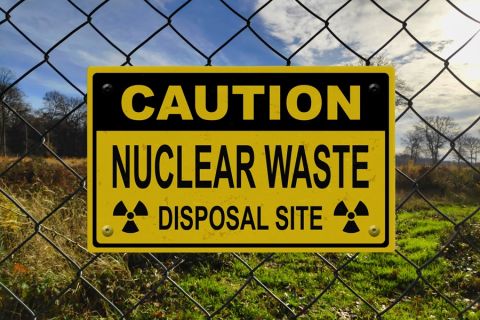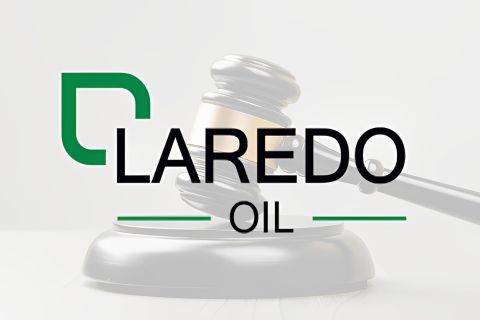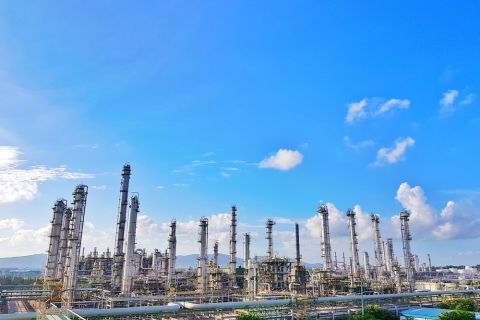In 2011, after many years of exploration and development, Statoil produced first oil from its Peregrino field located 85 km (53 miles) offshore Brazil. While the field provided many development challenges, namely 14°API heavy oil and high water production rates, the company found success in the field through its innovative application of surface, subsea, and subsurface technologies.
The Peregrino project
Development of the field by Statoil, according to the company, was completed to plan and below cost. More than 24 million man-hours were tallied during a development schedule that involved more than 500 contractors and the establishment of a “200-person-strong organization” in Rio de Janeiro, Statoil said.
The Peregrino field is the company’s largest international field. The reservoir is located about 2,300 m (7,590 ft) beneath the seabed in an estimated water depth of 120 m (394 ft) in licenses BM-C-7 and BM-C-47. Statoil holds 60% ownership and the operatorship of the field, and Sinochem holds the remaining 40%.
To reach the reservoir, Statoil used the same horizontal drilling techniques applied in locations such as the Grane heavy oil field in the North Sea, where several wells were drilled from a single location.

The FPSO Peregrino has a storage capacity of 1.6 MMbbl of oil, the equivalent to 16 days of round-the-clock production. (Images courtesy of Statoil)
“This project showcases the subsurface and reservoir management skills,” said Statoil spokesman B?rd Glad Pedersen. “Applying skills such as produced water injection, horizontal wells, and flow assurance to sustain the project over a longer term, recoverable resources are now in the range of 300 [MMbbl] to 600 [MMbbl of oil].”
The production system at the Peregrino field has the capacity to produce 100,000 boe/d.
There are 30 horizontal production wells and seven water injection wells, which are connected to two drilling and wellhead platforms located about 10 km (6 miles) apart. The platforms are connected to an FPSO with flowlines and power umbilicals.
Helping heavy oil flow
Producing the heavy oil found in the Peregrino reservoir is perhaps the greatest challenge that Statoil faces. The oil viscosity is so thick that it must be treated before it will flow. Each production well is artificially lifted using electric submersible pumps to bring the oil up from the reservoir to the wellhead platforms. For the oil to flow between the platforms and the FPSO, it is heated in the flowlines.
The fluid that reaches the FPSO from the reservoir is a mixture of oil, gas, water, and sand and has to be separated and cleaned. This is performed in the topside separation unit, where the arrival temperature of the fluid is boosted from 60°C to 66° C (140°F to 150.8°F) to 120°C to 150°C (248°F to 302°F). Once separated, the oil is stored in tanks at a temperature of 65°C to 70°C (149°F to 158°F) to prevent it from solidifying until it is offloaded onto shuttle tankers. The cleaned water is reinjected into the reservoir.
Peregrino FPSO
The key component in the Peregrino production system is the FPSO. Career change can come late in life or, as in the case of the very large crude carrier (VLCC) Maersk Nova, very early. In 2008, with only one commercial voyage on its log books, the Nova returned to the shipyard for its conversion from a VLCC to an FPSO vessel. At a cost of more than US $1 billion, the conversion was the largest unit investment in the history of the ship’s owner, the A.P. Moller-Maersk Group.
In April 2011, after three years in which more than 16 million man-hours were logged in the conversion of the vessel, the newly named FPSO Maersk Peregrino processed its first oil from the Peregrino field. The vessel, built as an oil transporter, had a new job as an oil producer. In July 2012, Statoil and Sinochem acquired the FPSO from Maersk FPSOs in an undisclosed sale.
With a daily production capacity of 100,000 bbl, 350,000 bbl of liquids, and 7.3 MMcf of gas, the FPSO Peregrino has a storage capacity of 1.6 MMbbl of oil, equivalent to 16 days of round-the-clock production. The topside consists of two identical production trains and 15 modules for crude oil separation, water treatment, chemical injection, metering, power generation, power distribution, power and process control, and accommodation for 100 staff.
Energizing Peregrino
The complex process of recovering the oil from the subsea reservoir and heating it in the separation unit and storage tanks requires vast amounts of electric power. To generate this energy, FPSO Peregrino has an onboard power plant that can produce 72 MW of electricity, or enough electricity to power 150,000 Brazilian households.
As a part of the conversion process, Maersk FPSOs partnered with ABB in the bidding process for the FPSO contract. The two companies formed a central engineering team, with ABB performing the FEED studies and calculations for the electrical, instrumentation, automation, and telecommunications systems. This enabled Maersk FPSOs to determine the cost of converting the VLCC to an FPSO and contributed to many of the process and production parameters of the design proposal. When Statoil awarded the FPSO contract to Maersk FPSOs in 2007, ABB was retained as the main automation and electrical contractor for the vessel.
On the electrical side, the ABB solution for the FPSO and wellhead platforms distributes power for the entire production process, including the electric submersible pumps in the production wells below the seabed.
A multisystem automation solution, including field instrumentation and telecommunications systems, was supplied by ABB. The solution includes a process control system, power management system, production information management system, condition monitoring system, fire and gas system, and emergency shut-down system, all integrated within the same System 800xA Extended Automation platform and operating environment.
Measurable improvements
Each system is operated from a System 800xA Extended Operator Workplace (EOW-x) control room onboard the FPSO. EOW-x offers an ergonomic operator environment that facilitates operator decision-making and produces measurable improvements in plant productivity, safety, information flow, and operator job satisfaction, according to ABB. Some 14,000 integrated operations on the vessel and platforms are controlled by AC 800M process controllers and AC 800M high-integrity controllers.
The solution also includes an 800xA Simulator, which contains adapted versions of all the site automation systems and connects them to a dynamic process flow model. The simulator provides realistic and safe process simulation for operator training. It enables engineering, testing, startup, optimization studies, and upgrading to be performed and mastered in the simulator prior to the execution in the field.
Future plans for Peregrino
Between first oil in April 2011 and June 2012, Statoil has lifted and processed more than 15 MMbbl of oil from the Peregrino field. Statoil and Sinochem continue to explore and develop the field. The companies announced in October that appraisal well 3-STAT-8-RJS on the Peregrino South discovery had been drilled. The appraisal well encountered approximately 85 m (279 ft) of high-quality oil-filled sandstone reservoir in the Carapebus formation, supporting the current subsurface model.
ABB and Statoil contributed to this article
Recommended Reading
Venture Global Gets FERC Nod to Process Gas for LNG
2024-04-23 - Venture Global’s massive export terminal will change natural gas flows across the Gulf of Mexico but its Plaquemines LNG export terminal may still be years away from delivering LNG to long-term customers.
The Jones Act: An Old Law on a Voyage to Nowhere
2024-04-12 - Keeping up with the Jones Act is a burden for the energy industry, but efforts to repeal the 104-year-old law may be dead in the water.
BWX Technologies Awarded $45B Contract to Manage Radioactive Cleanup
2024-03-05 - The U.S. Department of Energy’s Office of Environmental Management awarded nuclear technologies company BWX Technologies Inc. a contract worth up to $45 billion for environmental management at the Hanford Site.
Laredo Oil Settles Lawsuit with A&S Minerals, Erehwon
2024-03-12 - Laredo Oil said a confidential settlement agreement resolves a title dispute with Erehwon Oil & Gas LLC and A&S Minerals Development Co. LLC regarding mineral rights in Valley County, Montana.
DOE Considers Technip, LanzaTech For $200MM ‘Breakthrough’ Technology Award
2024-03-25 - The U.S. Department of Energy funding will be used to develop technology that turns CO2 into sustainable ethylene.





